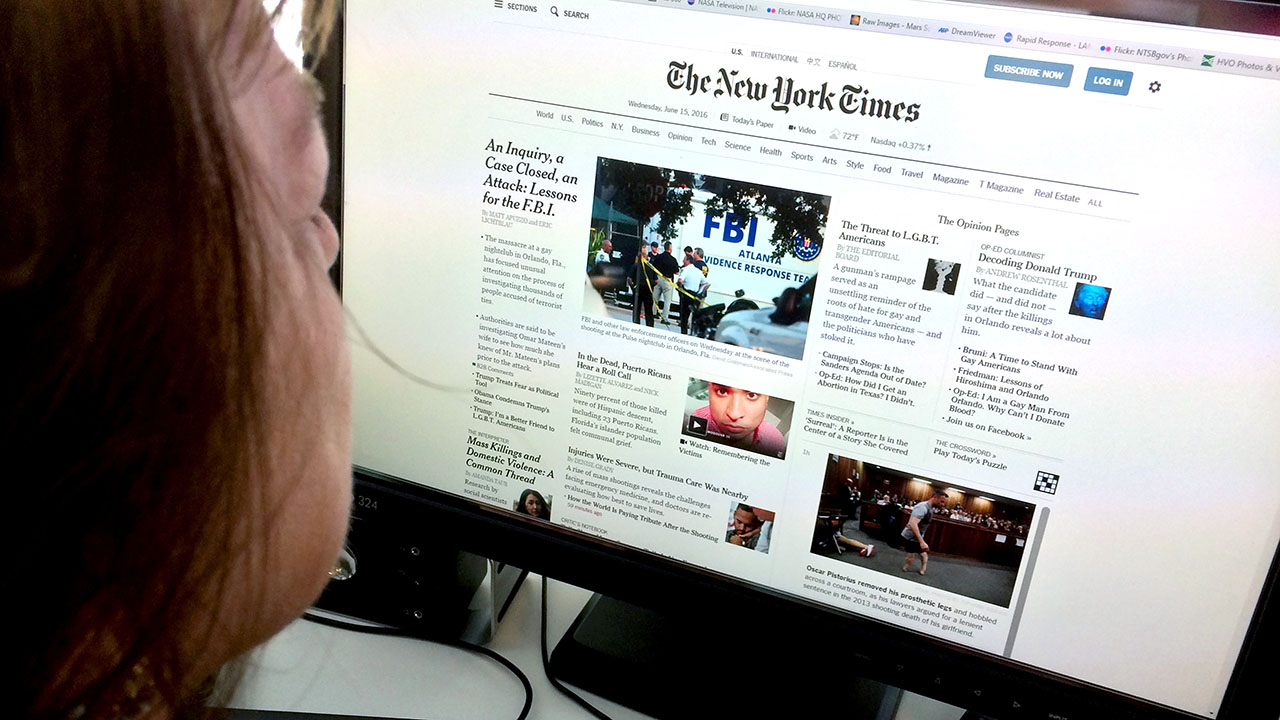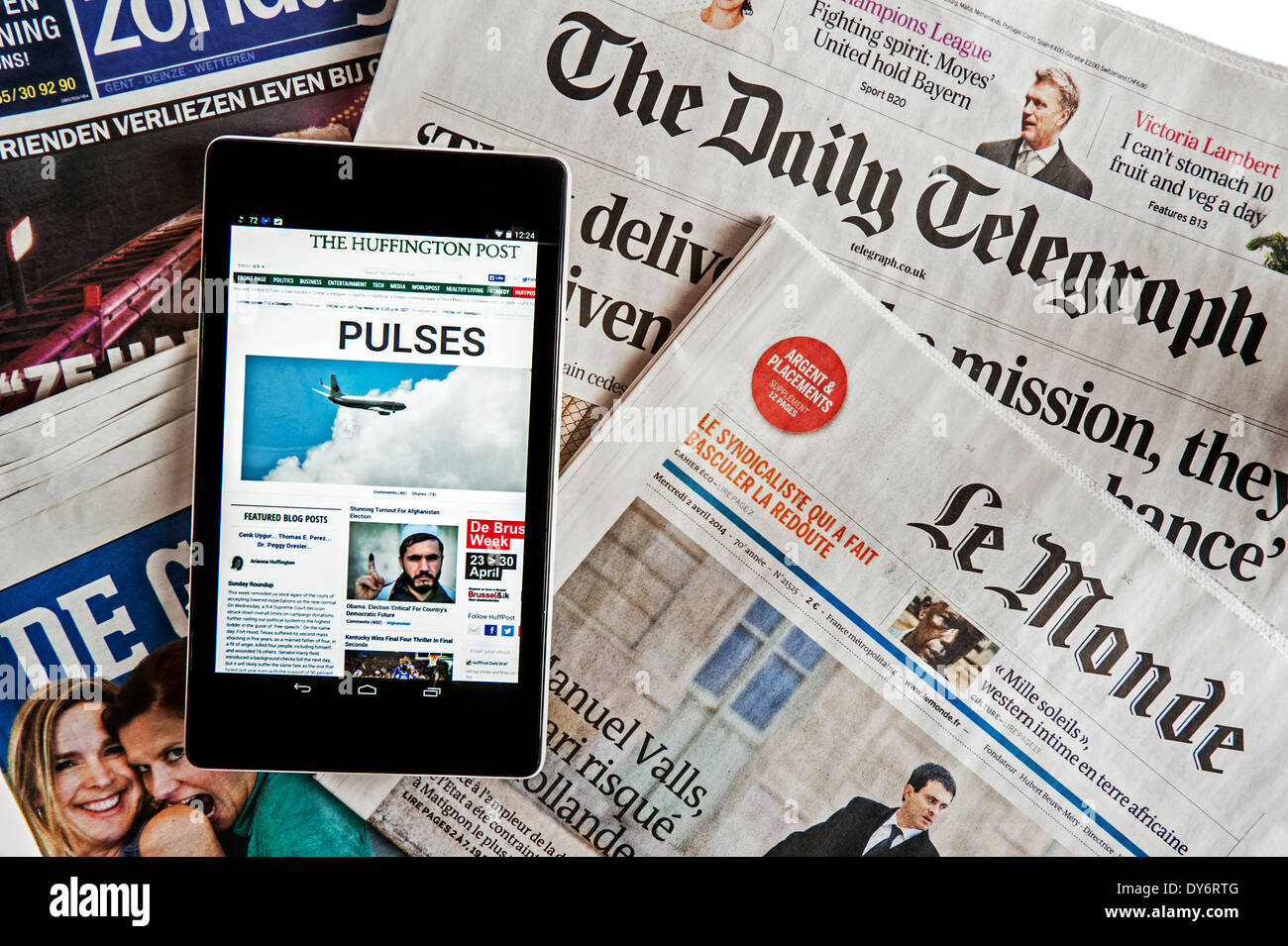The Impact of Social Network on the Way We Eat News Online
Social network has basically transformed news consumption. It offers immediate access to info, frequently eclipsing conventional media outlets. However, this rapid dissemination includes obstacles. Customers deal with the threat of coming across false information and ending up being entraped in resemble chambers. The formulas driving individualized content can cover diverse point of views. As these characteristics advance, comprehending their ramifications comes to be crucial for notified involvement in public discussion. What methods might help navigate this complex landscape?
The Advancement of News Consumption in the Digital Age
As technology advanced, the method individuals taken in news changed considerably in the digital age (stnews.live). Standard papers and relayed media began to decline as the web became a main resource of details. On the internet systems used immediate accessibility to news short articles, videos, and podcasts, permitting users to stay informed at any type of time. The convenience of mobile phones better accelerated this change, allowing customers to obtain updates on the move
Furthermore, the increase of news aggregators and websites promoted the intake of varied point of views, empowering individuals to customize their news intake based upon individual rate of interests. This development additionally prompted news organizations to adapt their techniques, concentrating on digital web content and appealing viewers with multimedia layouts. Therefore, the standard obstacles of time and room in news shipment lessened, causing an extra immediate and personalized news experience for audiences worldwide.
The Function of Social Media Platforms in News Distribution
Social media site systems have actually changed news circulation by offering instantaneous access to info. Their algorithm-driven web content curation typically prioritizes engagement over precision, causing considerable integrity challenges (stnews.live). As individuals navigate this landscape, the implications for news usage and public discussion come to be progressively complex
Instant News Access
Traditional news outlets have actually long been the primary resource of details, the increase of social media platforms has dramatically transformed how news is accessed and consumed. Instant news accessibility has become a hallmark of the electronic age, enabling customers to get updates in actual time. Platforms such as Twitter, Facebook, and Instagram allow news to spread out quickly, frequently surpassing conventional media in rate and reach. Users can share tales, discuss occasions, and involve with journalists, developing a vibrant interaction between the target market and news web content. This immediacy fosters a society of necessity, triggering customers to inquire quickly. The assumption for prompt news has actually improved journalistic practices, engaging news companies to adapt their strategies to meet the demands of a fast-paced digital atmosphere.
Algorithm-Driven Content
While customers proactively involve with content on social media, the formulas that regulate these systems play an essential duty in determining which news stories gain exposure. These algorithms examine customer habits, choices, and engagement metrics to curate customized news feeds. Because of this, particular tales may be intensified while others stay odd, usually prioritizing astonishing or trending subjects over substantive coverage. This discerning exposure forms individuals' perceptions of existing events and affects public discourse. In addition, the reliance on algorithm-driven material can create resemble chambers, where individuals are mostly revealed to viewpoints that straighten with their very own beliefs. The dynamics of news circulation on social media systems considerably impact how individuals eat and translate information in the digital age.
Trustworthiness Obstacles
As customers significantly turn to social media sites for news, the integrity of details come across on these systems ends up being a pressing worry. The decentralized nature of social media allows any individual to publish material, frequently obscuring the lines in between reliable journalism and misinformation. Formulas focus on interaction over precision, leading to the prevalent dissemination of spectacular or misleading stories. This environment postures substantial difficulties for customers trying to recognize credible sources. Social media platforms, while venturing to fight misinformation through fact-checking and content small amounts, face criticism for inconsistencies and predispositions in their techniques. Ultimately, the obligation lies with individuals to critically assess the news they eat, as the rapid spread of details frequently outmatches verification efforts by platforms.
The Rise of Citizen Journalism and User-Generated Material
The increase of citizen journalism has equipped day-to-day people to share news and perspectives, often supplying insights that standard media may ignore. This shift likewise offers substantial difficulties, specifically the spread of misinformation that can occur from unproven content. As user-generated content becomes extra prevalent, the equilibrium between authentic voices and accuracy in coverage stays a crucial issue.
Empowering Everyday Voices

Obstacles of Misinformation
While the rise of citizen journalism has actually opened up opportunities for varied voices in the media landscape, it has likewise introduced significant challenges related to false information. The convenience of sharing details with social networks systems allows individuals to disseminate news promptly, however this fast view it spread often comes with the price of accuracy. User-generated web content often lacks the extensive fact-checking and editorial oversight that typical journalism supplies. Sensationalized or incorrect narratives can get grip, misdirecting target markets and forming public understanding. The mixing of opinion and fact within social media complicates the difference in between qualified details and misinformation. Consequently, consumers need to navigate a progressively complicated media setting, calling for vital thinking skills to recognize dependable news sources amidst the sound

Misinformation and Its Effects for Public Discussion
As social networks systems significantly dominate the landscape of info dissemination, the proliferation of misinformation postures considerable challenges for public discussion. Misinformation, commonly designed to mislead or provoke psychological feedbacks, can distort perceptions of reality and undermine trust in qualified resources. This sensation brings about polarized point of views, as people gravitate in the direction of resemble chambers that enhance their ideas, further setting departments within culture.
The effects for public discourse are extensive. When residents depend on incorrect details, significant discussion lessens, and the democratic process suffers. Furthermore, misinformation can prompt fear and complication, influencing public health and wellness, safety, and political stability. Because of this, fostering media proficiency becomes vital, empowering people to critically evaluate details and discern truth from fiction. Resolving the obstacles postured by misinformation is essential for maintaining the integrity of public discourse and making certain an educated population efficient in participating in useful discussions.
The Influence of Formulas on News Visibility
Offered the main duty of algorithms in identifying material exposure, their impact on news usage is extensive. These formulas, used by social media sites platforms, focus on specific kinds of web content based upon user interaction and preferences. Consequently, news write-ups that line up with preferred fads or target market interests are a lot more likely to be displayed prominently, while much less sensational stories might be forgotten. This develops an atmosphere where users are exposed primarily to information that enhances their viewpoints, possibly bring about echo chambers.
The constant evolution of algorithms suggests that news organizations need to adapt their approaches to straighten with these transforming parameters, usually focusing on clickbait or emotionally billed headlines. The integrity of news coverage can be endangered, as crucial tales might not obtain the presence they are entitled to. The algorithmic shaping of news visibility for that reason plays an essential function in influencing public perception and understanding of current events.
The Change Towards Visual Storytelling in News Media
Significantly, news media is welcoming visual narration as i loved this a powerful tool to engage target markets. This method leverages pictures, video clips, infographics, and interactive aspects to convey info much more efficiently than standard text-based layouts. As interest covers reduce, visuals offer a quick, impactful method to interact intricate stories and get audiences' interest.
Platforms like Instagram and TikTok have additional accelerated this trend, compelling wire service to adapt their material methods to fit these visually-driven environments. By incorporating compelling visuals, news electrical outlets can enhance psychological connections and foster higher understanding of topical issues.
Visual narration enables for more diverse stories, showcasing several point of views through vibrant presentations. As target markets significantly consume news via mobile gadgets, the shift toward visuals not only satisfies customer preferences however likewise helps to break down obstacles to details accessibility. Ultimately, this evolution mirrors a more comprehensive change in how news is produced and useful source consumed in the digital age.
Future Trends: Navigating the Changing Landscape of News Consumption
While the digital landscape proceeds to evolve, news consumption is positioned for significant change driven by arising technologies and transforming audience behaviors. As fabricated intelligence and equipment learning breakthrough, customized news feeds will end up being much more prevalent, permitting individuals to receive material tailored to their passions. This modification could result in higher engagement yet likewise raise worries concerning resemble chambers and false information.
The surge of voice-activated tools and smart speakers will certainly influence just how news is supplied, changing the emphasis from visual to auditory layouts. This pattern might encourage wire service to take on even more concise and appealing audio content.

Regularly Asked Inquiries
How Do Social Media Interactions Affect News Integrity?
Social media interactions can greatly influence assumptions of news trustworthiness. Interaction metrics, such as sort and shares, frequently form audience trust fund, with popular blog posts acquiring perceived authenticity, despite the precision or integrity of the details presented.
What Function Do Influencers Play in Shaping News Narratives?
Influencers significantly shape news stories by leveraging their systems to intensify particular tales, usually customizing web content to their target market. This can lead to biased point of views, impacting public understanding and focusing on sensationalism over accurate coverage.
Just How Can Users Identify Reliable News Sources on Social Media?
Users can identify reputable news resources on social media by inspecting the resource's reputation, verifying realities via multiple electrical outlets, assessing the expertise of the content, and acknowledging potential predispositions in reporting to assure precise information.
What Effect Does Social Media Site Have on Typical Journalism Jobs?
Social media considerably impacts standard journalism tasks by modifying revenue models, decreasing demand for print media, and fostering competition from citizen journalists. Several experts deal with task insecurity and should adapt to rapidly altering media landscapes.
How Do Various Demographics Consume News on Social Network?
Various demographics exhibit diverse choices for news usage on social media. More youthful audiences favor platforms like TikTok and Instagram for fast updates, while older people often tend to prefer Twitter and facebook for extra comprehensive conversations and write-ups.